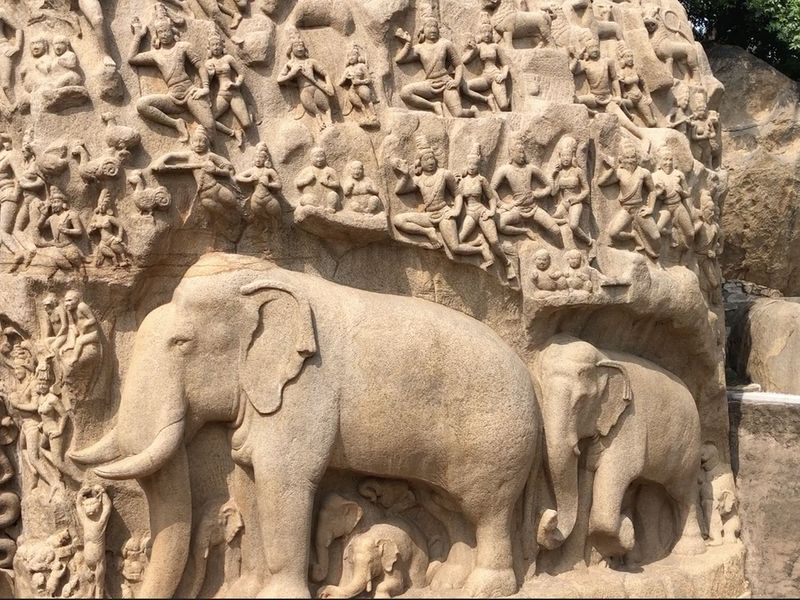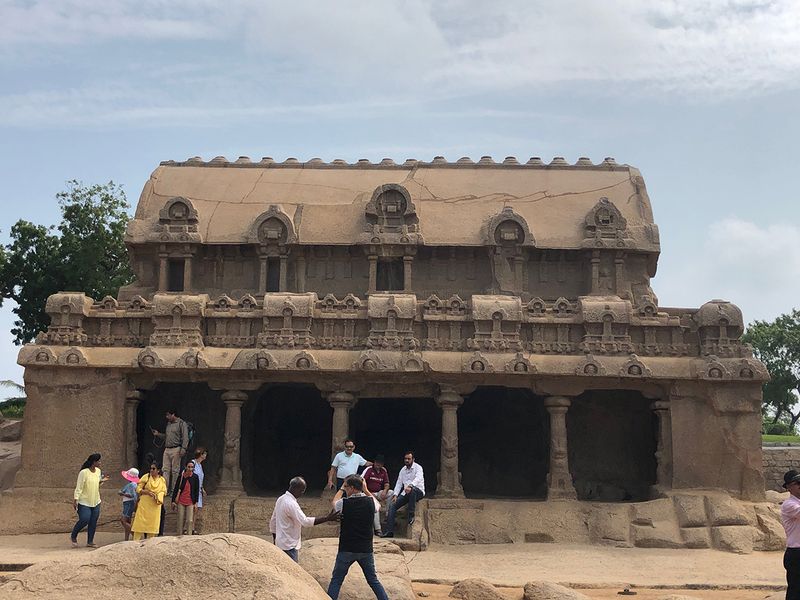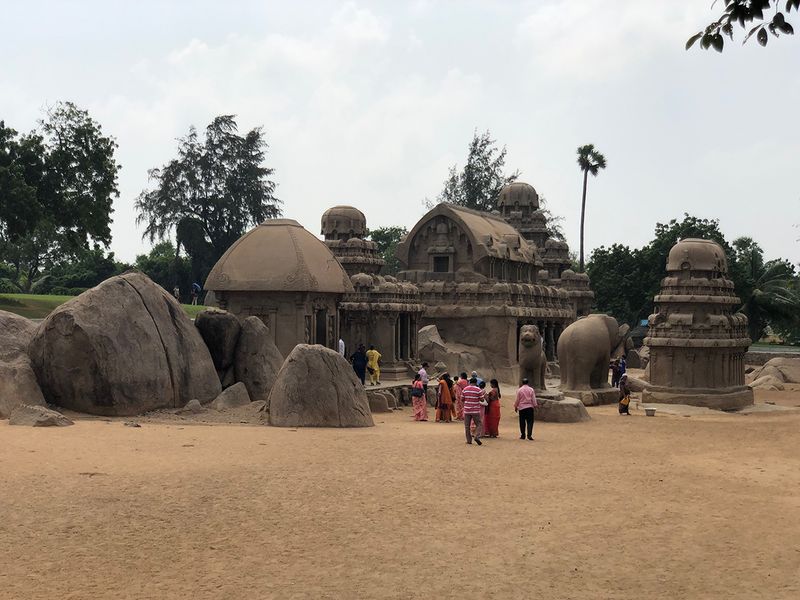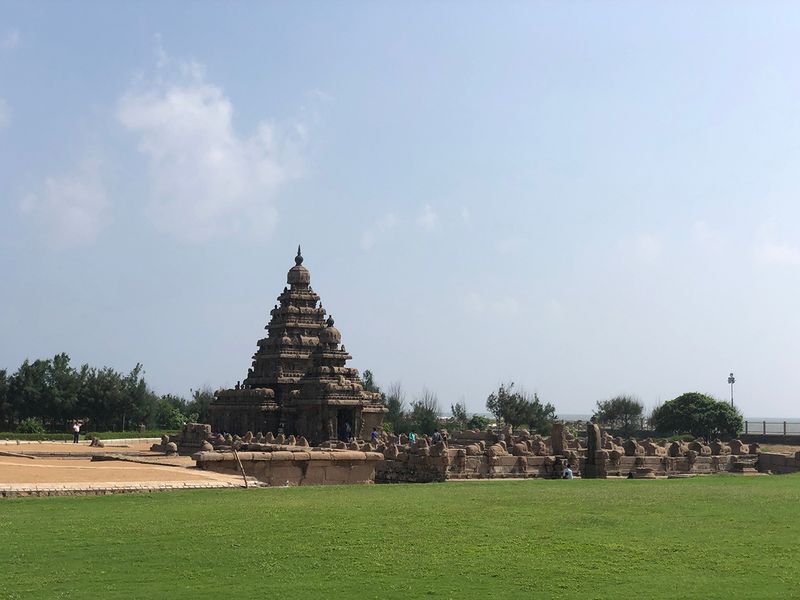
Bengaluru: Mahabalipuram is among the greatest wonders of Indian artistic genius. A walk through this ancient town in Tamil Nadu takes you to the mythical age of Mahabharata, hand-sculpted 1,400 years ago.
Starting from the early 6th century, the Pallava Dynasty ruled over most of what is now North and Central Tamil Nadu and some parts of modern-day Karnataka for almost 400 years.
Ruling from the city of Kanchipuram, Pallavas reigned over a major part of South India and left an indelible mark on the culture, art and architecture of the region. Their influence, especially in temple architecture, has been epoch making.
In fact, Pallavas are considered the original developers of the South Indian Dravidian temple architecture with towering gopuras (ornate entrance of a temple), elaborate mandapas (pillared halls or pavilions) and intricate vimanas (pyramidal towers built over the central shrine of a temple) that began to take shape with the magnificent Shore Temple on the beach of Mahabalipuram.

Being passionate builders, the greatest contribution of Pallavas came in sculpting splendid edifices out of rocks, with their masterpiece Mahabalipuram turning out to be an epic in stone.
The city, also known as Mamallapuram after its great ruler Narasimha Varman Mamallan, began to take shape in the 6th Century and reached its cultural zenith in the mid-7th Century, under Mamallan — the great wrestler.
Artistically carved out of rocks and massive boulders, Mamallapuram is a great example of a visionary king’s dream chiselled into a reality.
So well thought out and executed is this city of sculptures that once you enter its broad avenues you will literally feel the mythical age of Mahabharatha coming to life.
Unique in their style, scale and range
While India has a number of rock-cut monuments and cave temple complexes such as Ajanta and Ellora, this 7th Century group of monuments are unique in their style, scale and range.
The magnum opus of the Pallava dynasty’s architectural work, Mahabalipuram exceeds other similar heritage sites in its splendour and magnitude.
From bas relief that has the entire natural and mythical world coming to life to sculpted scenes and giant monoliths, Mahabalipuram is the only ancient Indian town that has the entire range of stone work.

And what we see now is what has survived through the vagaries of time and elements over the last 14 centuries. Imagine walking through this city in its heydays, with all its chiselled pomp and glory!
So vast and extensive are the monuments of this Pallava marvel that walking through these giant artworks one might be excused for thinking that people in those days had chisels for hands.
Before becoming the cultural capital of the Pallavas, Mamallapuram had been a flourishing seaport for hundreds of years, with several Greek scholars, including Ptolemy I, mentioning the town in their works.
As a centre of pilgrimage, Mahabalipuram attracted thousands of people, with great poets and saints including Thirumangai Azhwar rendering hymns in its praise.
From Arjuna’s Penance and Krishna Mandapam to Pandava Cave and Pancha Ratha, the monolithic sculptures and cave temples in Mamallapuram have given splendid forms to the ancient epics that have shaped the imagination of Indians for millennia.
However, among all the wonderful man-made creations, a giant boulder balancing tantalisingly on a ridge, known among locals as Krishna’s Butterball, stands out. Though an outcrop of the rock, it stands on and naturally connected to it, Krishna’s Butterball seems poised to roll over anytime.
A Unesco World Heritage site, the serene and mesmerising environs of Mahabalipuram are nothing less than an ancient open-air museum.

The quaint, laid-back town is truly an ode to the vision of a glorious dynasty and the skills of its accomplished craftsmen, deserving a visit by every lover of Indian art, heritage and culture.
Carry the monuments
If you are too fascinated by the larger than life epic surrounding you in Mahabalipuram, and can’t have enough of it, you have the option of carrying home miniature models of the monoliths, rock-cut caves and temples from the local sculptors, many of whom are the descendants of the artisans who carved out Mahabalipuram with their bare hands.

How to get there?
Located 60km south of Chennai, Mahabalipurma is around an hour’s drive from the capital city of Tamil Nadu on the East Coast Road.
For international travellers, Chennai has a well-connected international airport with direct flights from across the world.
This little ancient jewel is well-connected through public and private transport systems, including regular state transport buses, day tour buses that start early in the morning, as well as private taxis. Driving along the East Coast Road is pleasant experience as it skirts along the Coromandel Coast.
However, a day is not enough to explore the sheer range of monuments in Mamallapuram. For longer stays, the town has hotels and homestays that suit all pocket sizes.
Travelling locally is a breeze as most of the monuments are within the walking distance of each other.
-- Shafaat Shahbandari is a Bangalore based independent journalist. He is the founder of Thousand Shades of India, an alternative media platform that celebrates the diversity of India.












